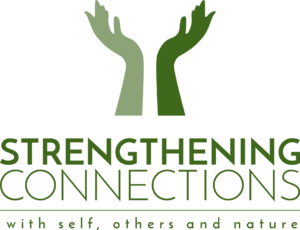Loose Parts can be defined as ‘open-ended objects with no predetermined purpose, use or set of rules’. There is no right or wrong way to use them and they can be used on their own or with other materials, sollitarily or socially. It is the child who leads the play with Loose Parts, therefore the learning naturally supports individual needs, abilities and interests.
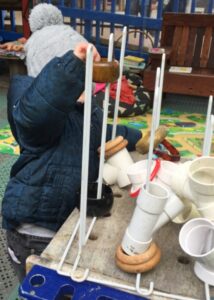
Using a recycled shoe rack with plumbing fittings and bangles -wooden and resin
The concept of Loose Parts was originally created in 1972 by architect Simon Nicholson who describe the use of open-ended materials in a child’s environment, which he believed was strongly linked to creativity and critical thinking later in life.
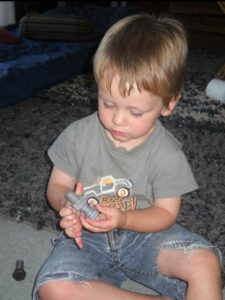
“Loose Parts should be part of every list of ‘core’ resources. It is basically how we grew up, using those bits of treasure around us and playing outside for hours! How many of you remember building and creating huts and tree houses using blankets, sticks, planks, pegs, ropes.”
-Kimberley Crisp
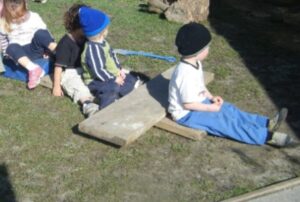
“The more passive the object, the more active the mind.”
– Emmi Pikler

Problem solving to use the milk crates to get on to the cable reel
Action reaction (usually plastic) toys typically have only one purpose or limited use, therefore the brain doesnt have to think very hard to work it. When toys have one purpose or look like a specific thing it is harder for our brain to turn it into something else, or give it another use. Whereas, Loose Parts have no specific function or goal. They can be moved, arranged, designed, taken apart and more!
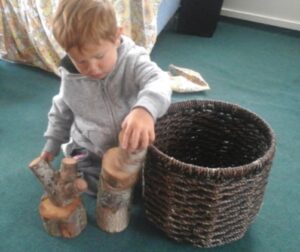
Playing and experimenting with open-ended materials encourages creativity and imagination. Skills in planning, communication and problem solving are developed – and because there is no prescribed way to use the parts, children make the decisions. They learn, through play, at the level that they are ready for – and naturally stretch themselves by setting their own goals and challenges (Play ‘n’ Learn).
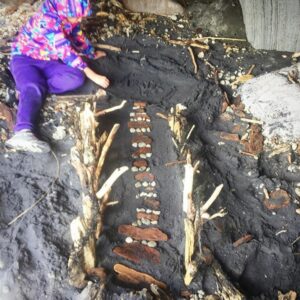
Loose Parts foster spontaneous and creative ways for children to engage in their environment.
When we provide an environment rich in resources it allows children to create, imagine, manipulate, investigate, connect and problem solve. This deep learning in action is an utter joy to watch.

Lisa Daly explains Loose parts as
“Natural or synthetic found, bought, or upcycled materials-acorns, hardware, stones, aluminium foil, fabric scraps, for example-that children can move, manipulate, control, and change within their play”.
-Lisa Daly
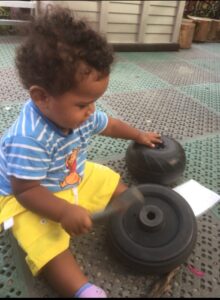
Making music using old bicycle wheels and sticks
These parts can be completely unrelated and their size and nature can vary depending on the user and their setting. They can be offered by an adult or collected by children and can be played with alone or with others. Loose Parts are unlimited.
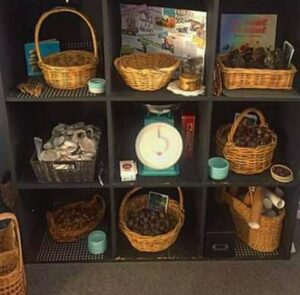
Kimberley Crisp captures all essences of Loose Parts in her acrostic poem…
“L-ots
O-rdered
O-pen ended
S-aves the planet
E-vokes imaginationP-lay and more play
A-ttention and awareness
R-elationships, risk and resilience
T-ime to tinker and potter
S-aves the pocket”-Kimberley Crisp

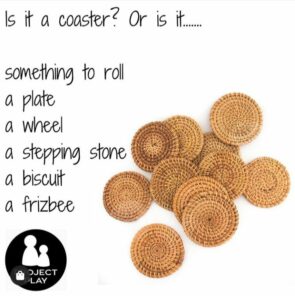

Is it a doilie or is it
a plate,
a placemat,
a doll bed or blanket,
a stepping stone,
a sign,
a lily pad,
a biscuit, pizza
Or something else?
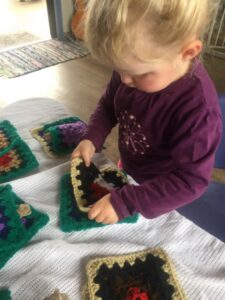
When you see a child, fully engrossed in play, working in the kitchen, using a shell for a bowl and gumnuts for snacks, they are not only working their imagination muscle, they are connecting with nature building a relationship with those treasures.

As well as the rich thinking and learning that comes from Loose Part play, it saves the pocket and the planet, 2 very important values to teach our children.
For the most part, Loose Parts are free or cost very little.
If natural, when finished you can simply return them back to the earth, to decompose naturally, rather than to a hole in the ground to live on for another 100,000 years!
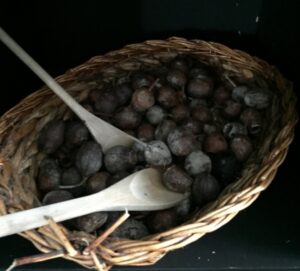
Many of us enjoy collecting, as do children.
Encourage your team and families to collect.
In large numbers, lots of the same.
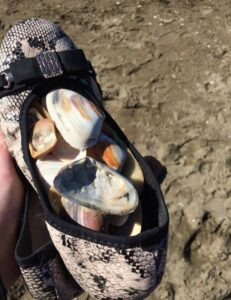
Make it a staff challenge.
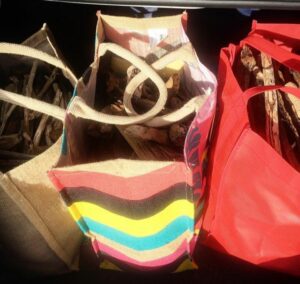
For more inspiration and ideas, get your hands on Lisa Daly’s books… retailing at approx $60NZD, these books are a valuable resource for any home or centre.
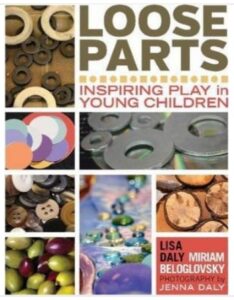
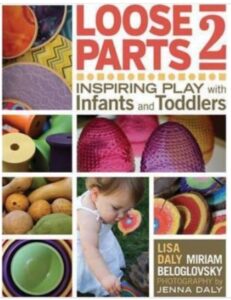
You will notice Book 2 focusses on infants and Toddlers, which is great for when children are prone to mouthing and we need ideas for play resources that are large and safe.
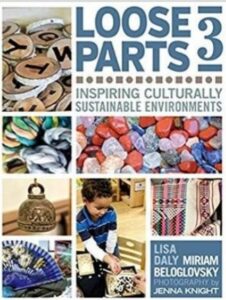
Starting out with a collection can because little overwhelming. I suggest starting with one area at a time….
Play kitchen/home play space….
First, look at what plastic and single purpose items you have in this space and make a list of things you could swap out for Loose Parts /multiple purpose items.
For example, plates, cups and bowls can be swapped out for Shells, Coasters, Doilies and large bark pieces, wood rounds.
Cutlery can be replaced with small twigs/sticks.
Food items can be swapped for gum nuts, shells, stones, bark, wood rounds.
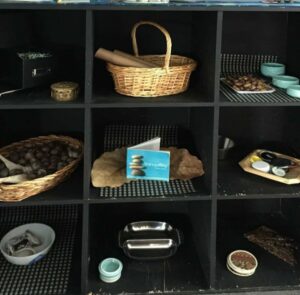
Outside
Cable reels, boxes, sheets, blankets, ropes, milk crates, log rounds, wheel barrows, piping, plankts, gutter pipe, tyres, cushions. Nature treasures such as drift wood, pine cones, pumice, robust shells, gum nuts, sticks, logs Etc. Etc.
Remember,
“When we provide simplicity
Children create complexityWhen we provide complexity
Children are robbed of creating in the way they are impulsively urged to.”
-Kimberley Crisp

The teachers/adults role in an environment rich in loose parts is quite different to that of an environment fill of single purpose and plastic items. For starters, there will be lots of Loose Parts to manage and maintain. Priorities change as teacher practice and philosophies are challenged.
I will delve into this more next week, so keep your eyes out. You wont want to miss it.
Click the link here: Loose Parts – The Teacher’s Role
